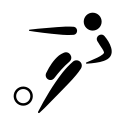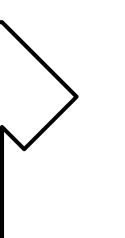Royal Charleroi
| Pełna nazwa | Royal Charleroi Sporting Club |
|---|---|
| Przydomek | Les Zèbres (Zebry) |
| Barwy |
|
| Data założenia | |
| Liga | |
| Państwo | |
| Stadion | |
| Prezes | Fabien Debecq |
| Trener | Edward Still |
| Strona internetowa | |
Royal Charleroi Sporting Club – belgijski klub piłkarski, grający w Eerste Klasse, mający siedzibę w mieście Charleroi. Klub rozgrywa swoje mecze na stadionie Stade du Pays de Charleroi, który może pomieścić 22 tysiące widzów.
Miasto Charleroi leży w regionie francuskojęzycznym, dlatego też klub wielokrotnie zatrudniał francuskich piłkarzy. Od sezonu 1985/1986 Charleroi grał nieprzerwanie w pierwszej lidze (Jupiler League). W sezonie 2010/2011 odnotował spadek do niższej klasy rozgrywkowej.
Jest też najbardziej znanym klubem w mieście. Drugi to Olympic Charleroi-Marchienne grający w trzeciej lidze.
Historia
Charleroi Sporting Club został założony 1 stycznia 1904 roku. Na oficjalne zarejestrowanie musiał czekać 3 lata i odbyło się to 24 listopada 1907 roku. 20 lat później zespół awansował do drugiej ligi, a w 1929 do nazwy zespołu dodano przedrostek Royal. W 1947 klub po raz pierwszy awansował do pierwszej ligi.
W 1949 klub ukończył sezon na 4. miejscu (2 punkty straty do Standardu Liège), natomiast rywal z miasta, Olympic Charleroi, zajął 14. miejsce. W 1955 roku Olympic spadł z ligi i zespół Royal Charleroi był jedynym z miasta Charleroi w ekstraklasie. W 1957 jednak zespół Olympic Charleroi powrócił do ekstraklasy, a Royal Charleroi w tym samym sezonie opuścił szeregi najwyższej ligi w kraju. Przez 9 sezonu klub grał na drugim froncie, aż do 1966 roku. W 1969 Royal Charleroi wywalczył wicemistrzostwo Belgii, 5 punktów za Standardem Liège, a w 1971 roku znów opuścił szeregi pierwszej ligi.
W 1974 roku postanowiono zreorganizować liczbę drużyn w pierwszej lidze i powiększono ją z 16 do 20 zespołów. Klub z Charleroi został wybrany jako jeden z nowych beniaminków (podobnie jak zespół Olympic). W 1980 Royal Charleroi przeżył kolejną degradację, a po 5 latach w końcu powrócił do ekstraklasy, w której gra nieprzerwanie od tamtej pory. Od tego czasu najlepszym wynikiem w lidze było 4. miejsce w 1994 roku.
Sukcesy
- Wicemistrzostwo Belgii: 1969
- Mistrzostwo 2. ligi: 1947
- Wicemistrzostwo 2. ligi: 1966
- Finał Pucharu Belgii: 1978, 1993.
Europejskie puchary
|
| Sezon | Rozgrywki | Runda | Przeciwnik | Dom | Wyjazd | Ogólnie |
|---|---|---|---|---|---|---|
| 1969/70 | Puchar Miast Targowych | 1R | 2–1 | 3–1 | 5–2 | |
| 2R | 3–1 | 0–2 | 3–3, w. | |||
| 1994/95 | Puchar UEFA | 1R | 2–1 | 0–2 | 2–3 | |
| 1995 | Puchar Intertoto | Grupa 10 | 1–0 | 3. miejsce | ||
| 0–2 | ||||||
| 2–3 | ||||||
| 3–0 | ||||||
| 1996 | Puchar Intertoto | Grupa 4 | 2–4 | 3. miejsce | ||
| 0–0 | ||||||
| 0–0 | ||||||
| 3–1 | ||||||
| 2005 | Puchar Intertoto | 2R | 0–0 | 0–1 | 0–1 | |
| 2015/16 | Liga Europy | 2Q | 5–1 | 4–1 | 9–2 | |
| 3Q | 0–2 | 0–3 | 0–5 | |||
| 2020/21 | Liga Europy | 3Q | 2–1 (D), Dogr. | |||
| PO | 1–2 (D) | |||||
Skład na sezon 2020/2021
|
|
Linki zewnętrzne
Media użyte na tej stronie
Pictograms of Olympic sports - Football. This is unofficial sample picture. Images of official Olympic pictograms for 1948 Summer Olympics and all Summer Olympics since 1964 can be found in corresponding Official Reports.
Football kit template socks
Flag of the Socialist Federal Republic of Yugoslavia (1946-1992).
The design (blazon) is defined in Article 4 of the Constitution for the Republic of Yugoslavia (1946). [1]
Flag of the Socialist Federal Republic of Yugoslavia (1946-1992).
The design (blazon) is defined in Article 4 of the Constitution for the Republic of Yugoslavia (1946). [1]
Flag of Israel. Shows a Magen David (“Shield of David”) between two stripes. The Shield of David is a traditional Jewish symbol. The stripes symbolize a Jewish prayer shawl (tallit).
Flag of England. Saint George's cross (a red cross on a white background), used as the Flag of England, the Italian city of Genoa and various other places.
Flaga Finlandii
Flag of Senegal
Flag of Jamaica. “The sunshine, the land is green, and the people are strong and bold” is the symbolism of the colours of the flag. GOLD represents the natural wealth and beauty of sunlight; GREEN represents hope and agricultural resources; BLACK represents the strength and creativity of the people. The original symbolism, however, was "Hardships there are, but the land is green, and the sun shineth", where BLACK represented the hardships being faced.
Flag of the Ivory Coast, written by Jon Harald Søby, modified by Zscout370. The colors match to what is reported at http://fotw.vexillum.com/flags/ci.html.
Autor: JonasBR, Licencja: CC BY-SA 4.0
Sporting du Pays de Charleroi
Autor: JonasBR, Licencja: CC BY-SA 4.0
Association football kit sleeves
Autor: JonasBR, Licencja: CC BY-SA 4.0
Football Club Lorient-Bretagne Sud
Autor: JonasBR, Licencja: CC BY-SA 4.0
Association football kit shorts
Autor: JonasBR, Licencja: CC BY-SA 4.0
Sporting du Pays de Charleroi
Autor: JonasBR, Licencja: CC BY-SA 4.0
Association football kit sleeves









































